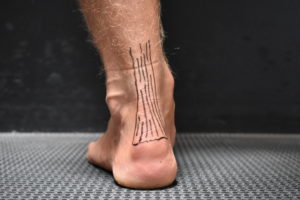1) Sciatica isn’t permanent and can heal.
Generally, 75% of sciatica cases resolve on their own within 3-4 weeks. How? Sciatica is often caused by irritation from disc material, and our incredible bodies are able to re-absorb disc material over time, leading to reduced symptoms. And if you’re considering surgery, WAIT! After 6-12 months, people who elect to have surgery end up with similar improvement to people who wait it out and let their bodies heal on their own!
2) Rest and stretching should NOT be your go-to choices for managing sciatica.
While it sounds like a good idea to just lay in bed for a few days, your muscles will be much more stiff from prolonged bed rest, so when you do get out of bed, you will likely feel more pain than if you had kept moving. Further, you miss out on the pain-relieving benefits of movement. As for stretching, if your sciatica is coming from a tight/spasmed piriformis (one of the muscles underneath your glutes), stretching the muscle can further compress the nerve and may temporarily worsen your symptoms. Similarly, if you are sitting/rolling on a lacrosse ball to try and loosen up, you may also increase your symptoms for a short time if the ball is too close to the nerve. Try moving the lacrosse ball closer to the outside of your thigh for a better option.
While it sounds like a good idea to just lay in bed for a few days, your muscles will be much more stiff from prolonged bed rest, so when you do get out of bed, you’ll likely feel more pain than if you had kept moving.
3) Movement is your best friend for sciatica.
One of the best things you can do is to keep moving as much as you can. Movement not only keeps your muscles loosened up, but also helps you improve circulation and brings nutrients to your healing tissues. Lastly, movement will help you focus on what you CAN do despite your back and leg pain, which is probably more than you think. Stay positive and keep moving!! Bonus Hint: Check out the sciatic nerve flossing video below to kick your way out of pain!
4) Sciatica can feel like different things to different people.
Sciatica is a bit of a catch-all term that generally refers to any pain or abnormal, uncomfortable sensation in the glutes or back of the thigh. This may be described as tingling, burning, stinging, cramping, shooting, numbness, or any other discomfort. The symptoms don’t have to stop at your knee either, some people have sciatica symptoms all the way down into their feet. This is because the sciatic nerve carries nerve fibers that travel from your spinal cord to your toes and back again, so irritation can be “felt” anywhere along its course. Regardless, if you’re having any of these symptoms, don’t panic, they are normal and will reduce over time.
5) Sciatica doesn’t always come from your glutes, nor does it always come from your low back.
Some people will have sciatica and after days/hours of stretching their piriformis (deep under the glutes!), still have no relief from their pain. While we know that stretching doesn’t always help, we also can’t forget that sometimes, sciatica symptoms are coming from nerve root irritation in the low back, and thus aren’t reduced by working on you glutes. On the opposite end of the spectrum, some people have tried chiropractic adjustment and all sorts of low back stretches, but might not experience any improvement if their sciatic symptoms are originating from a tightened/irritated piriformis muscle. If you’re not sure where your symptoms are coming from, a physical therapist might be able to give you some insight!
Movement is your best friend for sciatica.
6) Posture can affect your sciatica symptoms.
This may seem simple, but adjusting your posture could greatly affect your sciatica symptoms. For some people, simply shifting their weight off of their affected side can result in huge improvements while they are flared up. Further, changing the position of your low back might also help. Play around with different postures, and try not to stay in any one for too long. Remember, it’s best to get up and move frequently to keep your muscles loose!
BONUS: Your wallet might be contributing to your sciatica symptoms!
Is your wallet in your back pocket? Are you sitting on your phone in your back pocket? Believe it or not, these cannot only cause compression at the sciatic nerve in your glutes, but your asymmetrical posture might even aggravate back symptoms. Try taking that wallet or phone out for a few hours and see if it changes your symptoms!
Try taking that wallet or phone out for a few hours and see if it changes your symptoms!
As always, I hope this helps! If you have any questions or would like to read about certain topics, send us an email at TeamSP@SportsPerformancePT.com.
-Dr. Marissa Rescott, PT, DPT, CF-L1
For more tips on optimizing athletic performance FOLLOW US on:
- Instagram: http://www.instagram.com/SportsPerformancePT
- Facebook: http://www.facebook.com/SportsPerformancePT
- YouTube: http://www.youtube.com/c/SportsPerformancePT












